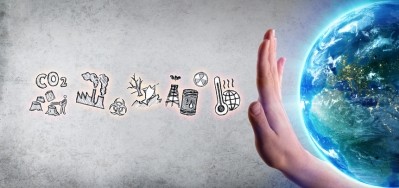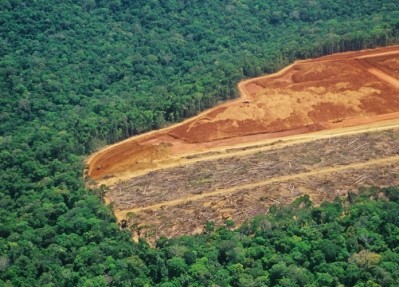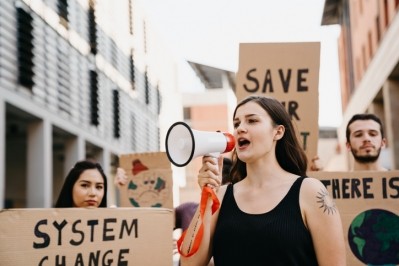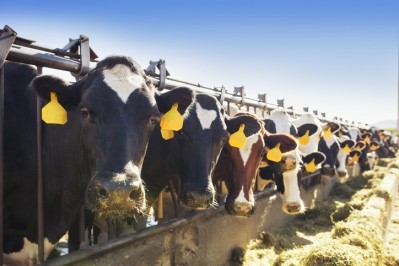Meat companies looking to feed to reduce emissions

In an industry note, Thijs Geijer, a senior economist covering the food and agriculture sector for Dutch bank, ING, writes that a breakdown of the carbon footprint of European meat production shows that for every animal type, a large share of all emissions is linked to animal feed.
Besides direct emissions from feed production, feed is responsible for a large share of the emissions because of the land use and the inputs needed to grow animal feed, he said.
Emissions for different types of meat vary considerably though, acknowledged the food and agri market specialist. “Emissions to produce 1kg of beef protein in Europe are 2.5 times higher than 1kg of pork protein and 4.5 times higher than poultry. “
Leveraging scale for influence
Although most emissions in the meat supply chain happen in the field and on the farm, the meat industry needs exert its influence to encourage all parties in the supply chain to make a difference, said the analyst.
“Major meat companies can leverage their scale and dominant position in the value chain and [their] industry knowledge to stimulate, reward and market the additional efforts that the millions of livestock farmers in Europe have to take to combat global warming.
“An increasing number of major European meat companies also acknowledge they are, to a certain extent, accountable for the emissions that happen outside their operations in the field and on the farm: so-called scope 3 emissions,” said Geijer.
He noted that, before setting scope 3 targets, many meat companies will need to have more data. However, farmers and feed companies may not be so willing to share data, said the analyst.
“That’s why more integrated meat companies are likely to have an advantage thanks to their long term relationship with many suppliers. Both the tools to measure emissions and the methodologies to determine the carbon footprint of individual products are rapidly evolving.
“Companies like Danish Crown and Vion are rolling out tools to monitor emissions on the farm level to (some of) their suppliers.”
Lowering the carbon footprint of feed
To reduce the carbon footprint of animal feed, the report outlines three potential options.
- Increase the share of more sustainable sources of animal feed
- Make use of additives to reduce methane and manure related emissions
- Improve the feed conversion rate, so less feed is needed to produce a kilogram of meat.
Better feed conversion rates are relevant for beef, pork and poultry alike and also provide a direct economic benefit, commented Geijer.
In the beef and dairy sector, there is also a lot of focus on what can be achieved with additives that help to reduce methane, he said.
Alternative feed sources
In pork and poultry, lower emissions will mainly have to come from changes in the composition of the feed mix, he reckons.
Changes in EU policy are also providing opportunities for alternative feed sources, said the analyst.
Several regulatory changes are helping to open up potential alternative sources for animal feed: the ban on processed animal protein (PAP) in pig and poultry feed has been lifted.
Furthermore, an update on the EU regulation on feed additives is expected before the end of 2021.
And there is a push on towards the use of certified soy, which is grown on land that is not associated with deforestation and land-use change. “Eventually, this could reduce the carbon footprint of part of the soy used in feed.”
But production of alternative feed sources has to grow from a low base, stressed Geijer.
“While innovation and changes in public policy create opportunities for alternative feed sources the scale on which they are produced is still small and the impact on the total feed mix should not be overestimated. Nonetheless, in relative terms, strong growth is expected towards 2030 and optimal use of these feed sources is one of the solutions for the meat industry to reduce emissions per kg of meat.”
Insect meal, animal products and former foodstuffs will likely remain a small part in total feed mix, he said.
And the price of a more sustainable feed mix is a hurdle: “Although changes in the feed mix can help reduce the environmental footprint, they can also have a major impact on the cost of feed and thus on farm profitability.”
Consumer buy-in
Furthermore, the meat sector needs consumer awareness to get a premium from the market, argued the analyst.
He said the growth of animal welfare concepts, like Red Tractor, Tierwohl or Beter Leven, has shown a certain willingness in the market to pay a premium for meat with added value.
Consumers do not seem to rank carbon footprint though as high as animal welfare, added Geijer.
However, he pointed out that Dutch consumer surveys also show that four out of ten consumers would be willing to pay more for meat with a lower carbon footprint.
Given that for pig farmers, feed generally makes up around 50% of total production costs, for poultry farmers, this is around 75%, and for cattle farmers, it can range from 15% to 50%, changes in the feed mix will only be made if there is either a substantial upside in terms of feed conversion or if markets and/or governments compensate farmers for doing so, he concluded.
The new Common Agricultural Policy (CAP) could cover some costs for farmers, he stressed.
“Within the EU’s Common Agricultural Policy budget for 2023 to 2027, between €7.5 to €9.5bn per year is reserved for ‘eco-schemes’ intended to reward more sustainable farming practices.
“Feed additives, optimized feed strategies, and breeding of lower emission animals have all been named as examples of such practices, but they still have to find their way into national strategic plans that are currently being written.
“It is in the interest of the meat industry to stress the importance of such measures to ensure they eventually end up in these national strategies.”
Greater European meat industry integration could reap rewards
A higher level of meat industry integration would give the sector a greater say in how to reduce supply chain emissions, according to the ING report.
“Throughout Europe, poultry production is more integrated than pork, and pork is more integrated than beef. This means poultry producers are generally more involved in what happens on the farm, such as having a say in which feed a farmer uses. At the other end are beef producers, who have less influence on the farm as they mainly process cows from the dairy industry.
“However, less integrated companies are also employing initiatives like creating strategic partnerships with a selection of their suppliers and customers (often retailers) in what can be seen as a kind of ‘soft’ integration.”














